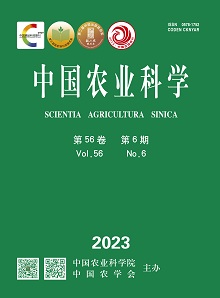【Objective】 The aim of this study is to screen the evaluation indexes of wheat source-sink and classify the source-sink types. In addition, the relationships between different source-sink types and the agronomic traits, yield and grain quality of wheat were also clarified, which provides a better understanding of wheat source-sink metabolism and wheat breeding. 【Method】 In this study, the related agronomic traits of source metabolism and sink metabolism of 190 wheat varieties which from different regions were measured. Then, the source-sink metabolic capacity of wheat was evaluated by principal component analysis, and the superior wheat materials were selected according to the composite score. Furthermore, the hierarchical clustering was conducted based on the source size (leaf area), source activity, sink number and sink activity. Then, based on the clustering results, the source-sink types of wheat were classified and the source-sink characteristics of different region of wheats were analyzed. Meanwhile, the agronomic, yield and quality traits of different wheat source-sink types were compared and analyzed. 【Result】 For better understanding the results, six indicators related to source activity were converted into three independent indicators (photochemical quenching coefficient, maximum photosynthetic potential, chlorophyll content), and five indicators related to sink activity were converted into two independent indicators (maximum filling rate, filling duration) based on the principal component analysis. The cumulative contributions of three source activity indicators and two sink activity indicators were 82.80% and 92.90%, respectively. Then the top 10 wheat varieties were screened based on the source activity, source size (leaf area), sink activity, and sink number (number of spike grains). According to the source-library relationship, all the wheat varieties were divided into three major categories and eight subcategories, including sufficient source-weak sink type (medium source-weak sink type, strong source-medium sink type), weak source-sufficient sink type (medium source-strong sink type, weak source-medium sink type) and source-sink balance type (weak source-weak sink type limited by sink activity, weak source-weak sink type limited by source activity and grain number per spike, medium source-medium sink type, and strong source-strong sink type). 76.84% of wheat lines were contained in three subcategories (weak source-weak sink type, the medium source-strong sink type, and strong source-strong sink type), other wheat lines were distributed in other subcategories evenly. Most wheat varieties of China showed similar source-sink relationship, which presented the medium level of source activity, leaf area and grain number per spike, while the sink activity was high. But the sink activity of wheat varieties which were cultivated at the middle and lower reaches of the Yangtze River is low. The plant height, length of uppermost internode and spikelet number in different categories indicated that the sufficient source-weak sink type>source-sink balance type>weak source-sufficient sink type, and the dry protein content, dry wet gluten content and sedimentation value in different categories showed that source-weak sink type > source-sink balance type > weak source-sufficient sink type. Grain water absorption showed that the stronger the sink activity had the higher the water absorption rate. The yield of per plant was different among different source-bank groups, but it was positively correlated with the source activity and the number of grains per spike in the three subcategories which contained most wheat varieties. 【Conclusion】 In this study, photochemical quenching coefficient, maximum photosynthetic potential and chlorophyll content could be used as the main indexes to evaluate the activity of wheat source. The maximum filling rate and filling duration could be used as the main indexes to evaluate the activity of wheat sink. In practical production, the wheat yield could be improved by increasing the number of grains per spike and the activity of source. When the supply capacity of source is stronger than the absorption capacity of sink, the plant height, peduncle length, spikelet number, dry protein content, dry wet gluten content and sedimentation value would be increased. Strong sink activity would help us to improve the water absorption of wheat grains.









